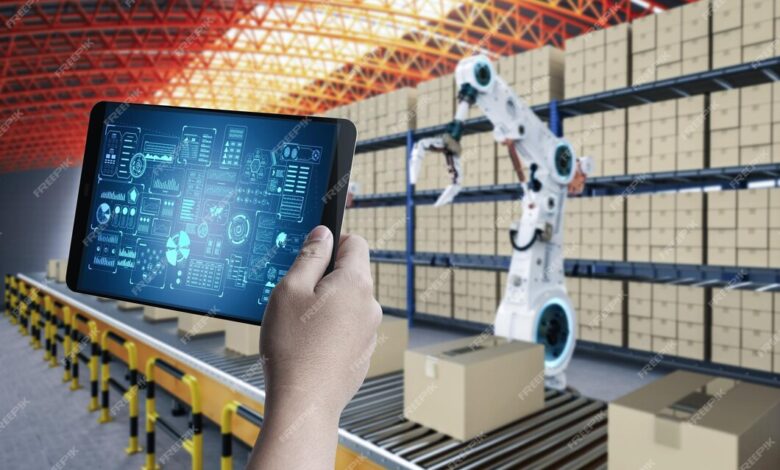The Role of Automation and AI in Modern Shipping

In today’s rapidly evolving world, automation and AI are reshaping industries far and wide, and shipping is no exception. From optimizing routes to ensuring timely deliveries, these technologies are transforming how goods travel across seas. Designed for logistics managers, tech enthusiasts, and supply chain professionals, this blog explores how automation and AI are making waves in modern shipping, ultimately driving efficiency and innovation.
The Digital Tide
Automation and AI are not just buzzwords; they are vital tools that have become integral in revolutionizing the shipping industry. With the pressures of global trade increasing, companies are seeking innovative ways to stay competitive. These technologies offer solutions that are not only efficient but also economically viable.
The challenges faced by the shipping industry are vast, ranging from fluctuating fuel prices to environmental regulations. Through automation and AI, companies can better manage these variables, allowing for smoother operations. This digital transition is not a mere trend; it’s a necessary shift towards sustainable and efficient shipping practices.
The adoption of these technologies is steadily growing. According to recent studies, over 50% of shipping companies have incorporated some form of automation into their operations. This figure is expected to rise as technology becomes more accessible and its benefits more apparent.
Navigating Efficiency
Efficiency is paramount in the shipping industry. With automation and AI, processes that once took hours can now be completed in mere minutes. This level of efficiency is crucial for logistics managers striving to meet tight deadlines and deliver goods on time.
Route optimization, a key component of AI in shipping, ensures that vessels take the most efficient paths. By analyzing weather patterns, ocean currents, and potential obstacles, AI can suggest routes that save time and fuel. This not only reduces costs but also lessens the environmental impact.
Automation further streamlines port operations. From automated cranes to self-navigating ships, these technologies minimize human error and increase throughput. The result? Faster loading and unloading times, leading to quicker turnaround and improved customer satisfaction.
Securing the Fleet
Security is another area where automation and AI shine. The marine industry faces constant threats from pirates and cybercriminals. AI-driven systems can detect anomalies in ship movements, alerting crews to potential threats before they escalate.
Automation plays a role in safeguarding data as well. With sensitive information constantly exchanged between ships and ports, cybersecurity measures powered by AI ensure that this data remains secure from malicious attacks. For supply chain professionals, this peace of mind is invaluable.
Predictive maintenance is another security benefit offered by these technologies. By continuously monitoring the condition of ships and their components, AI can predict when maintenance is required, preventing costly breakdowns and ensuring safety at sea.
Riding the Wave of Innovation
Innovation is the lifeblood of progress, and automation and AI are propelling the shipping industry into new territories. Autonomous ships, once a concept of science fiction, are now becoming a reality. These vessels promise to further reduce operational costs and improve safety.
AI’s role in decision-making cannot be understated. By analyzing vast amounts of data, AI provides insights that help logistics managers make informed decisions quickly. This ability to adapt and respond to changing conditions is essential in today’s fast-paced shipping environment.
Collaboration is also enhanced through technology. With automated systems handling routine tasks, human workers can focus on creative problem-solving and strategic planning. This synergy between man and machine is setting new standards for efficiency and innovation in shipping.
Challenges on the Horizon
Despite its many benefits, the path to full automation is not without challenges. The initial investment required for automation and AI technologies can be significant, posing a barrier for smaller shipping companies. However, the long-term savings and efficiency gains often outweigh these initial costs.
There’s also the issue of job displacement. While automation can handle repetitive tasks, it cannot replace the human element entirely. Shipping companies must find a balance, leveraging technology while also investing in retraining their workforce for more skilled roles.
Regulation is another hurdle. As technology advances, so must the regulations governing its use. Ensuring that AI and automation are deployed safely and ethically is crucial for the industry’s continued growth and acceptance.
The Future of Shipping
Looking ahead, the role of automation and AI in shipping will only expand. From autonomous vessels to predictive analytics, these technologies will continue to shape the future of the industry. For logistics managers, tech enthusiasts, and supply chain professionals, staying informed and adaptable will be key to navigating this evolving landscape.
The potential for growth and innovation in shipping is immense. By harnessing the power of automation and AI, the industry can achieve unprecedented levels of efficiency, safety, and sustainability. The future of shipping is bright, and those who embrace these changes will lead the way.
Automation and AI are more than just tools; they are catalysts for change in the shipping industry. By understanding their role and potential, logistics managers, tech enthusiasts, and supply chain professionals can position themselves at the forefront of this transformation. The sea of opportunity is vast, and with the right approach, the rewards are boundless. Whether it’s optimizing routes, enhancing security, or fostering innovation, automation and AI are setting the course for a new era in shipping.
AI in



